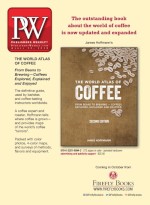Hirsch’s historical thriller, The Devil’s Half Mile (Forge, June), mixes financial fraud and murder in 1799 New York City.
You originally planned to write a nonfiction book. What happened?
I wanted to write a follow-up to my financial markets explainer, Man vs. Markets, to describe how a system of rules was created around the markets from scratch, and I chose the New York Stock Exchange as my subject. I very quickly found myself bogged down in research. Moreover, the subject was incredibly dry. I had hoped that characters like Alexander Hamilton and Aaron Burr might bring the story to life, but I just couldn’t make it work. Maybe I should have set it to music! I was bored and not writing. So I took some of the characters and wrote a murder into the narrative. This side project soon supplanted the original one.
How was the market scandal that affected late-18th-century New York similar to more recent market crashes?
The Great Panic of 1792 came about because the markets were essentially unregulated. The man who effectively caused the panic, William Duer, indulged in market manipulation, stock fraud, insider trading, and a whole bunch of other things that would have put him in the slammer today, but were entirely legal—if not entirely acceptable—back then. He did go to prison in the end, but only because he couldn’t afford to pay his debts. Our financial crisis of 2008 came about in large part because of a move towards deregulation that began during the Clinton administration. The argument was that banks and other financial institutions were essentially good and could be trusted to police themselves. Does that sound familiar?
What else about New York in 1799 interested you?
It was the year the legislature passed the law for gradual abolition of slavery in the state. The result was an explosion of the black population in the city, which immediately became a destination for free blacks and runaway slaves. Weirdly, because slavery was only to be gradually abolished, there were still slaves in the city, which created all sorts of labor issues. Immigration from Europe was rising at the same time, and many of those incomers were from Ireland. Thanks to the brutal oppression of the Catholic Irish, the vast majority of the people coming from Ireland were unskilled laborers, which put them in direct competition with black workers. So it was a tense time.



 Volume 265
Issue 18
04/30/2018
Volume 265
Issue 18
04/30/2018





